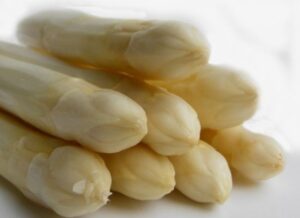The French Table: Spring Market Veggies

Thanks to CSA boxes and farmers markets, we’ve all gotten more accustomed to unknown vegetables. But, there are still a few that, for whatever reason, were surprising to me the first time I saw them being eaten at French tables. Luckily, these vegetables are available to those who look, and you’re just in time to start putting them on your table for spring.
French Radishes
Many people dislike radishes because of their extremely bitter flavor, and while this can be overcome by roasting radishes, there’s still nothing nicer than a French radish for an apéritif or cocktail hour. French radishes or breakfast radishes are smaller than typical radishes you see in American supermarkets. Look for the smallest ones; they’ll have the least bitter flavor. Trim the ends, leaving just an inch of green to hold onto, then soak them in two changes of cold water, and dry them in a dish towel. Serve with good organic butter and salt: you’re expected to swipe your radish in soft butter and dip it in salt before eating. They can also, of course, be used in a myriad of delicious radish recipes.
Salsify
Salsify, also called oyster plant, is a vegetable that somehow manages to combine the tastes of asparagus and oysters. When cooked, salsify are soft and nearly melt in your mouth. They’re delicious served with mayonnaise or aioli, or else baked into a gratin under bechamel sauce.
To cook fresh salsify, first scrub them very well, then soak in cold water for an hour to make peeling easier. Trim the ends and peel the root with a vegetable peeler, transferring immediately to a bowl of lemon water to prevent browning. Boil or steam salsify until a knife inserted into one enters extremely easily, then drain and use as you like.
White Asparagus
I’ve always eaten green asparagus, the skinny ones no wider than a pencil which taste heavenly when roasted. I tried the same technique with French white asparagus to no avail. This much thicker version, about the size of an adult male’s thumb, don’t do as well roasted, but they’re delicious when boiled and dressed simply with salt, butter and lemon juice, or else used in this homestyle French asparagus gratin. Remember that no matter how you use them, white asparagus need to be peeled before eating, but once they have been peeled, they can be used in any recipe that calls for green asparagus.
image: FotoosVanRobin

